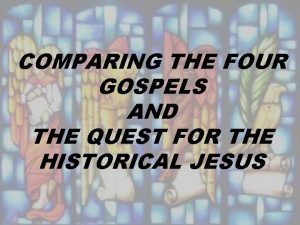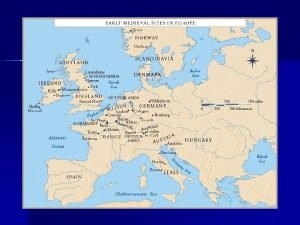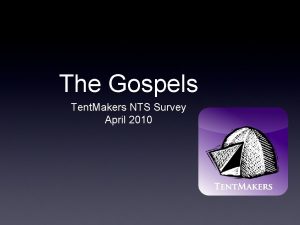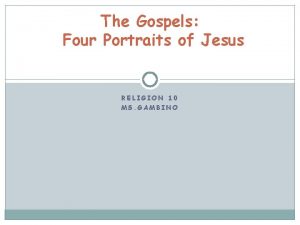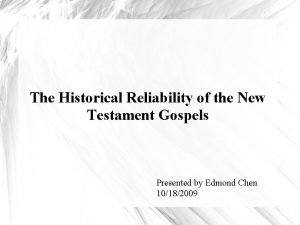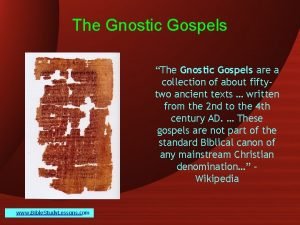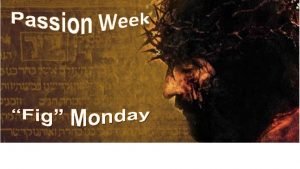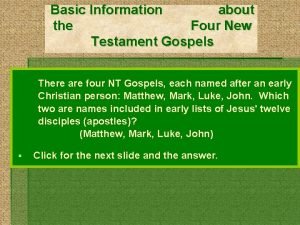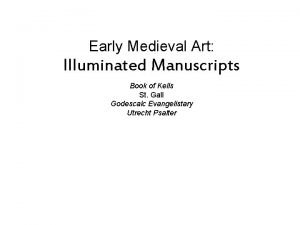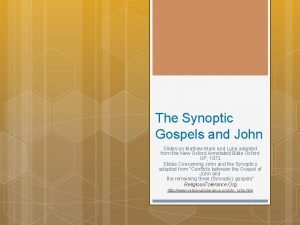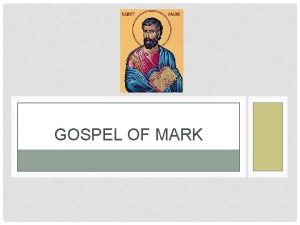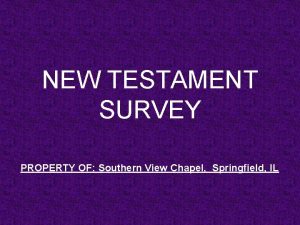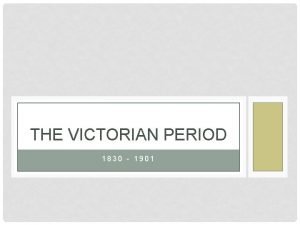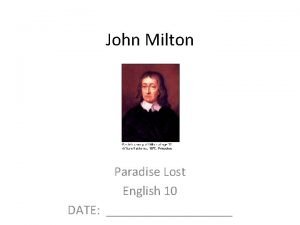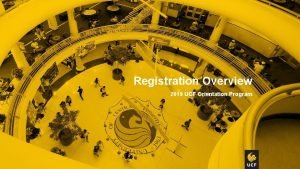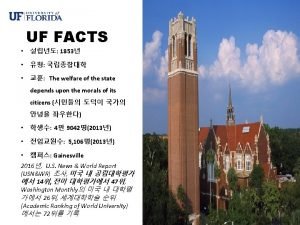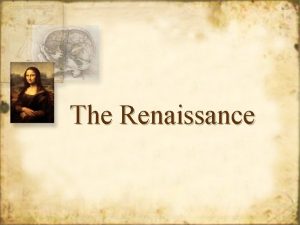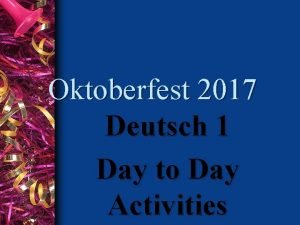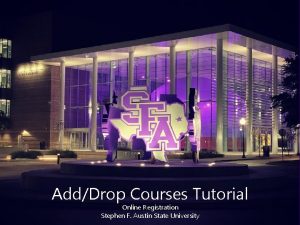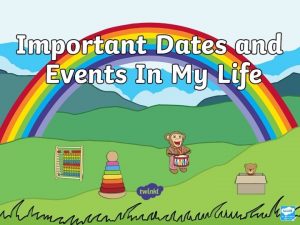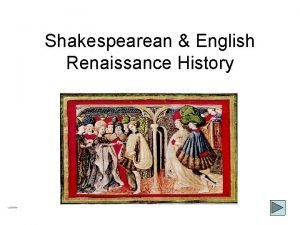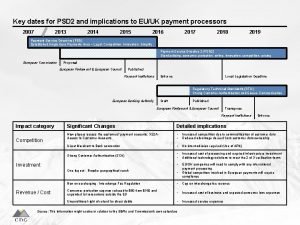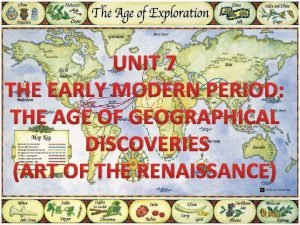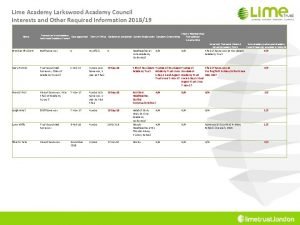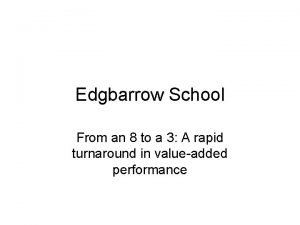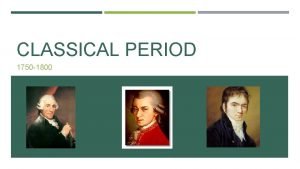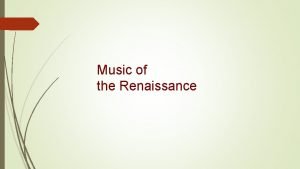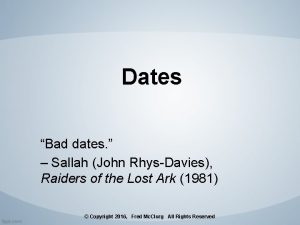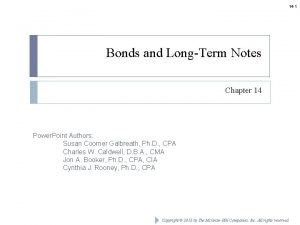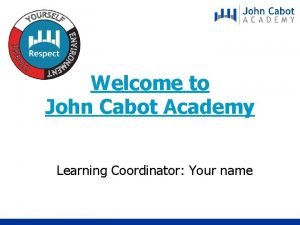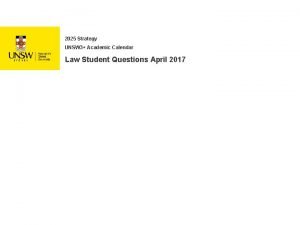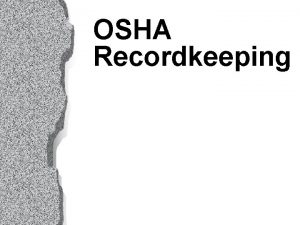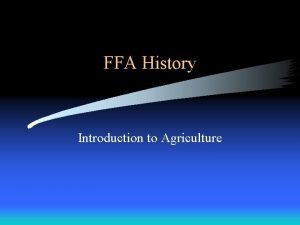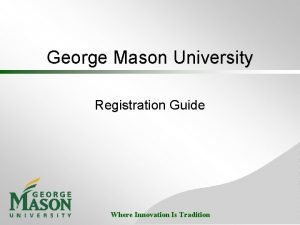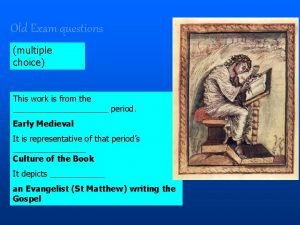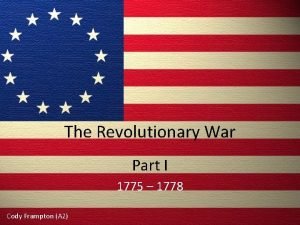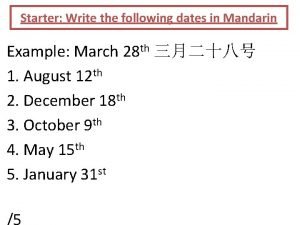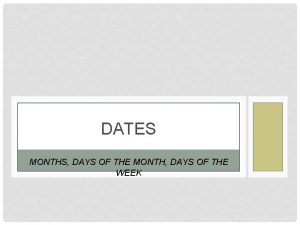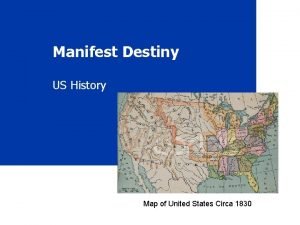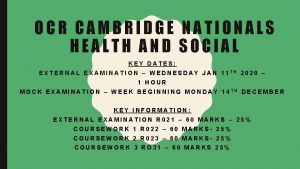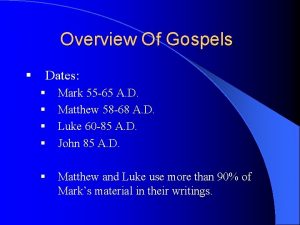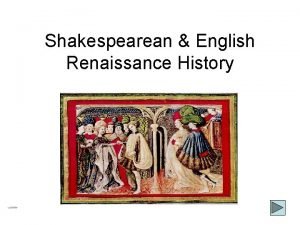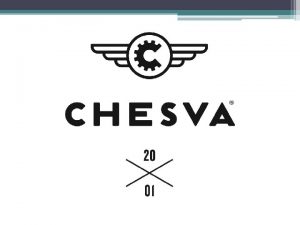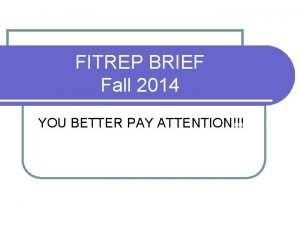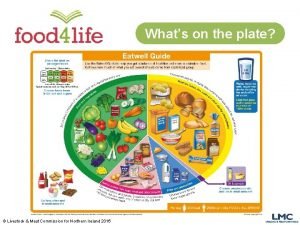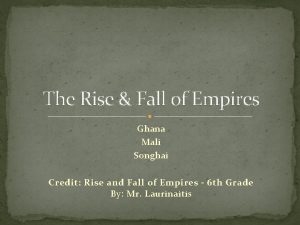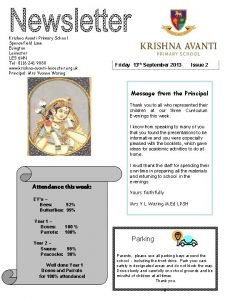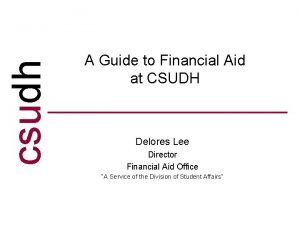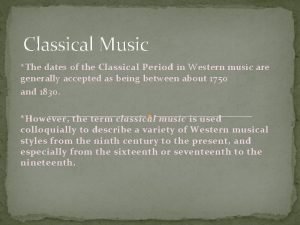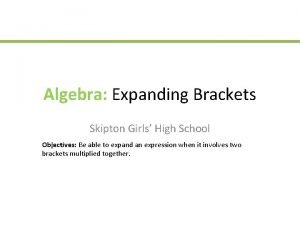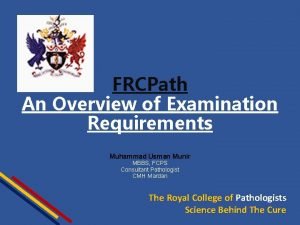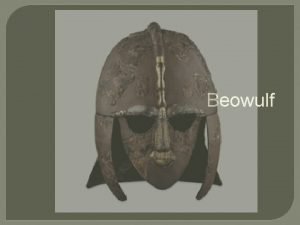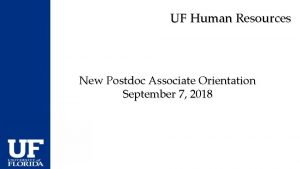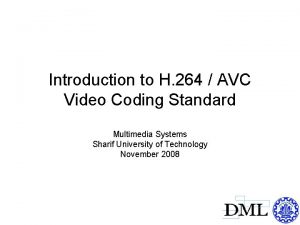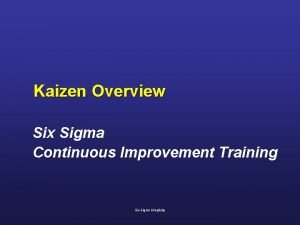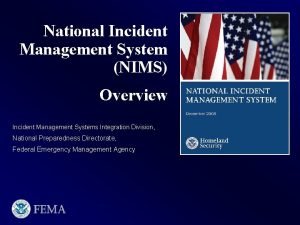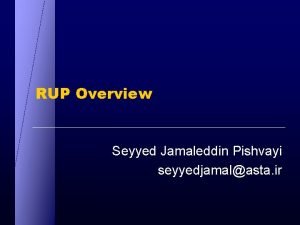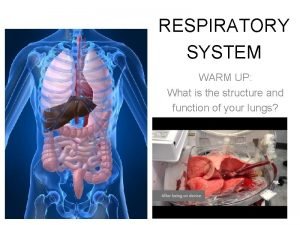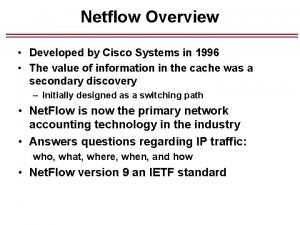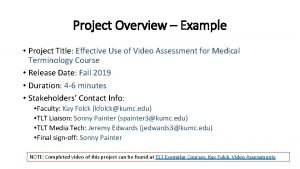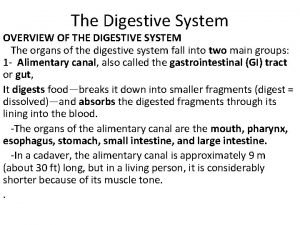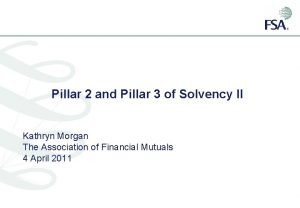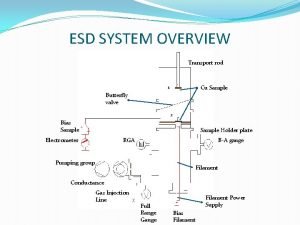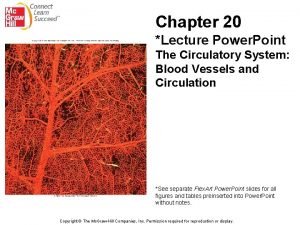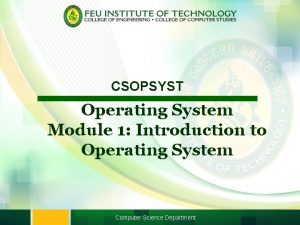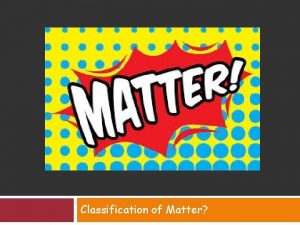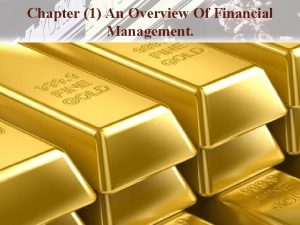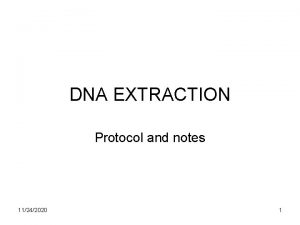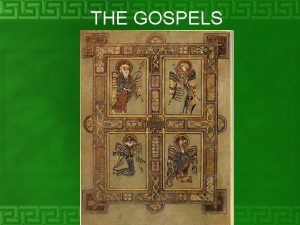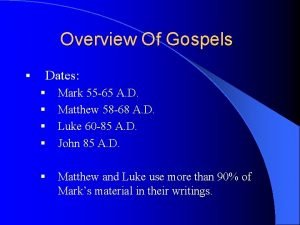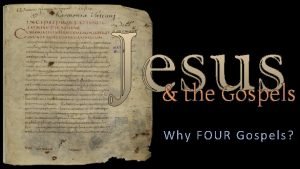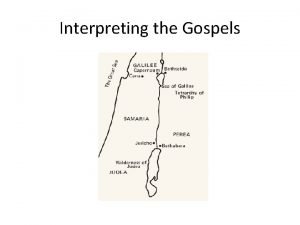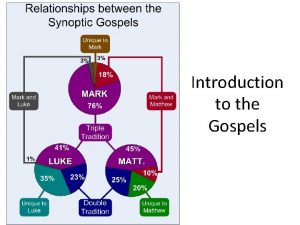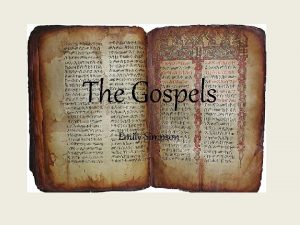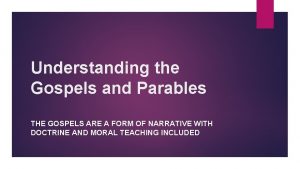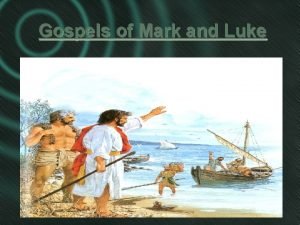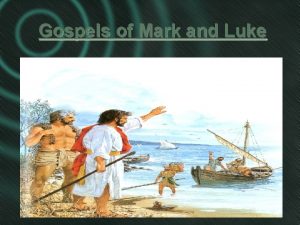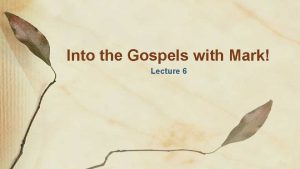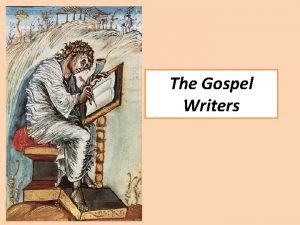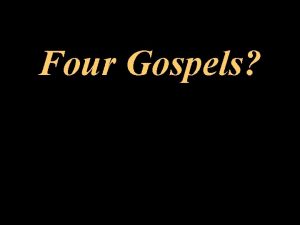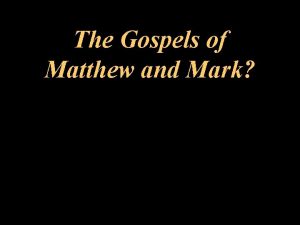Overview Of Gospels Dates Mark 55 65 A





































































































































































- Slides: 165

Overview Of Gospels § Dates: § § Mark 55 -65 A. D. Matthew 58 -68 A. D. Luke 60 -85 A. D. John 85 A. D. § Matthew and Luke use more than 90% of Mark’s material in their writings.

Comparison of 4 Gospels Matthew Mark Luke John Jesus as: King of Israel Servant of Son of Lord Man Son of God Reader: Jew Roman Greek World Power Grace Glory Prominent Law Idea:

Gospel of Luke Author – Luke o Born of Greek parents o Probably the only Gentile writer of the NT o Close friend and traveling companion of Paul. (Col 4: 14, Phil 1: 24, 2 Tim 4: 11) o May have been converted by Paul while living in Antioch.

Gospel of Luke Profession – Luke o Physician(uses medical terms in writing) o Believed his advanced education may have been received at Athens or Taursus. A minister sees men at their best. A lawyer sees men at their worst. A doctor sees men as they are.

Gospel of Luke Writing Style – Luke o Historian – uses historical datelines in the gospel. (1: 5, 26, 56, 2: 1, 21 -22, 36 -37, 42, 3: 1 -2) o Considered by many to be the most beautiful book ever written.

Gospel of Luke Themes in Luke - Gospel for the Gentiles 1) Luke begins dating from Roman Emperor 2) Emphasis not on life of Jesus as the fulfillment of Jewish prophecy(Unlike Matthew) 3) Seldom quotes the OT 4) Often gives Hebrew words in Greek equivalent(ex. Master instead of Rabbi)

Gospel of Luke Themes of Luke – Gospel of Prayer – shows Jesus at prayer at great moments of his life Gospel of Women – gives a special place to women (ex. Birth narrative told from Mary’s point of view, in all but 5 chapters) Gospel of Praise – “Praising God” occurs more in Luke than the rest of the NT combined.

Gospel of Luke Key Phrase of Luke – “Son of Man” occurs 25 times in the gospel. Key verse of Luke – 19: 10 – “for the Son of Man has come to seek and to save that which was lost”

Gospel of Luke Main Divisions of Luke Preface 1: 1 -4 Birth and childhood of John the Baptist and Jesus (1: 5 – 2: 52) Preaching of John the Baptist(3: 1 -20) Jesus’ Baptism and Temptation(3: 21 -4: 13) Ministry of Jesus especially in Galilee(4: 149: 50)

Gospel of Luke Main Divisions of Luke Jesus and disciples on the way to Jerusalem (9: 51 -19: 44) Last days in Jerusalem, the Crucifixion and Burial (19: 45 – 23: 56) The appearances of the resurrected Christ and His Ascension (24: 1 -53)

Gospel of Luke Class Objectives: Increase knowledge Jesus o Detailed account of his life, conversations and attributes o Like being with Christ during his ministry Results : Changed lives, Deeper conviction Luke 5: 8, 5: 27 -28, 7: 15 -16, 7: 36 -38

Gospel of Luke Purpose of Luke – 1: 1 -4 To Whom and Why? Research or Inspiration? An inspired account that is the product of careful historical research. Perfect understanding… orderly account… know with certainty….

Gospel of Luke –Lesson 2 John’s Birth Announced – (1: 5 -25) Zacharius & Elizabeth were Levites l Both upright in sight of God l Childless Angel’s promises about John: Great in sight of God, Filled with the H. S. , Turn many to the Lord, Spirit and power of Elijah, Make ready the people for the Lord.

Gospel of Luke –Lesson 2 Jesus’ Birth Announced – (1: 5 -25) Mary l Virgin l Blessed, favored vs. 28, 30 Angel’s promises about Jesus: He will be great, called Son of the Highest, God will give him throne of David, Reign over the house of Jacob, Kingdom won’t end.

Gospel of Luke Jesus’ Birth Announced – (1: 26 -38) Gabriel’s reassurance: “With God nothing is impossible” Contrast Mary’s reaction(1: 38) to Zecharius’ response.

Gospel of Luke –Lesson 2 Reassuring visit with Elizabeth – (1: 39 -56) l John leaps in her womb vs. 41 l Calls Mary, mother of my Lord vs. 42 l Blessed is she who has believed vs. 45 l Mary rejoices vs. 46 -55

Gospel of Luke –Lesson 2 John’s Birth – (1: 57 -80) l Zechariah and Elizabeth insist on the name of John. Vs. 60 -64 l Affect on the people vs. 65 -66 l Zechariah’s prophecy vs. 67 -79 1) Praised of God and His remembrance of Israel 2) Concerning John: Prophet of Highest, prepare the way for Lord, give knowledge of salvation, light to darkness, guide feet to path of peace.

Gospel of Luke –Lesson 2 Jesus’ Birth – (2: 1 -40) l Historical setting – Roman census vs. 1 l Jesus born in Bethlehem in a manger Philippians 2: 6 -7 l Angels visit the shepherds vs. 8 -16 – Why shepherds? Vs. 17

Gospel of Luke –Lesson 2 Presentation at the Temple – (2: 21 -40) l Simeon’s prophecy Light to bring revelation to the Gentiles vs. 32 Destined for the rising and falling of many vs. 34 – – l l Anna’s prophecy – spoke to all that looked for redemption What effect do you think this would have on Joseph and Mary? Vs. 33

Gospel of Luke –Lesson 2 Passover Trip – (2: 41 -52) l Jesus is twelve years old l Joseph and Mary kept the law concerning feasts – Josephus wrote that over 2 million Jews attended Jesus is separated on the return from Jerusalem l – – 70 miles between Nazareth and Jerusalem How did they leave him? Character of Jesus? Found Jesus 3 days later in the temple l – – – Amazing the teachers at his understanding and questions Question of Mary – Jesus response vs. 49 Did they understand?

Gospel of Luke –Lesson 2 John’s Ministry – (3: 1 -20) l Where: Jordan l Message: Baptism of repentance for remission of sins l Fulfillment: Isaiah 40: 3 -5 Crying in the wilderness, Preparing the way, All flesh to see salvation l Audience: Sinner, hypocrites, brood of vipers l Result: vs. 8 Must bear fruit worthy of repentance, Cannot depend on lineage l Purpose: Prepare the way for the Christ

Gospel of Luke –Lesson 2 Jesus’ Baptism and Temptation – (3: 21 -22, 4: 1 -13) l What was John’s reaction to Jesus request? l Why was Jesus baptized? l Fulfill all righteousness(precept of God given by prophet) l Matthew 21: 23 -27 - Of God l Significance of the God’s response

Gospel of Luke –Lesson 2 Temptation – (3: 21 -22, 4: 1 -13) l Jesus was thirty when he began to teach – – – Age a Levite entered on God’s service (Num 4: 3, 47) Age Joseph stood before Pharaoh (Gen 41: 46) David began to reign(II Sam 5: 4) Full of the Spirit, Jesus was driven into the wilderness Tempted for 40 days then the 3 temptations Fasted 40 days and 40 nights l l l – – 40 day fast by Moses(Ex 34: 28; Duet 9: 18) 40 day fast by Elijah(I Kings 19: 8)

Gospel of Luke –Lesson 2 Temptation – (4: 1 -13) l Turn Stone to Bread Method used for the first Adam – food Prove His power Satisfy present appetite – – – l l l Jesus answer – vs. 4 quotes Deut. 8: 3 Shows his trust in God Israel sinned (Ex. 16: 1 -9)

Gospel of Luke –Lesson 2 Temptation – (4: 1 -13) l Test God’s care – Jump from the temple l l l Reply vs. 12 quotes Deut 6: 16 Satan twists the truth and tries to create doubt. He uses whatever desire he can to try to trick man. Jesus responds to Satan with the word of God

Gospel of Luke –Lesson 2 Temptation – (4: 1 -13) l Obtain kingdoms by worshipping Satan – Avoid the hardships that were ahead Reply vs. 8 quotes Deut 6: 13 l Jesus obtained all earthly and heavenly authority by serving God l

Jesus – The Son of God l John The Baptist (3: 1 -20) – l The Father and the Spirit (3: 21 -38) – l Since you are the Son of God The Scriptures (4: 14 -30) – l This is My Beloved Son Satan (4: 1 -13) – l Prepare The Way For The Lord Today the scripture is fulfilled in your hearing Demons (4: 31 -44) – The Holy One of God

Jesus Is Tempted (4: 1 -13) l First Temptation – Question God’s Love – Would He Let His “Beloved Son” Be Hungry? l Second Temptation – Questioned His Hope – Glory Without Service – No Need To Die l Third Temptation – Questioned His Faith – Test God To See If He Will Do As Promised

Lessons From His Temptation l A Lesson On Identifying Sin l A Lesson On Overcoming Sin l A Lesson On Handling Scripture l Which of the three components of Faith does this passage build? – Conviction – Trust - Surrender

TEMPTATIONS TESTING PROBLEMS IN THIS AREA HOW CAN I HAVE VICTORY? The Physical Desires, Needs The Good What determines our choices Doubt Failure to trust God when things are difficult.

The Gospel of Luke Lesson 3 Luke 4: 14 – 6: 11

FAITH l CONVICTION l TRUST l SURRENDER Intellect Emotions Will

l l l l Ministry in Galilee I (4: 14 – 6: 11) Jesus Preaching At Nazareth (4: 14 -30) Miracles At Capernaum (4: 31 -44) Calling the First Disciples (5: 1 -11) Jesus Cleansing A Leper (5: 12 -16) Jesus Healing The Palsied Man (5: 17 -26) The Call Of Levi (5: 27 -32) Question About Fasting (5: 33 -39) Controversy About The Sabbath (6: 1 -11)

l Jesus Rejected Nazareth (4: 14 -30) “The Acceptable Year of The Lord” – The Day of Grace Has Come l “Is This Not Joseph’s Son? ” – “Physician Heal Thyself” – Prove it! Elijah Sent To Zarephath Widow in Sidon l Elisha Healed The Leper Naaman of Syria l – Jesus Preached That All People Could Receive The Same Privileges As God’s People l The People Tried To Kill Him.

Jesus At Capernaum (4: 31 -44) l People were Astonished (31 -32) – His Teaching Had Authority l Man With A Demon (33 -37) – The Holy One of God Healed Simon’s Mother-In-Law (38 -39) l Healing Sick, Casting Out Demons (40 -41) l Jesus Prayed (Mark 1: 35) l Preaching The Kingdom (42 -44) l

Draught of Fishes (5: 1 -11) l Jesus Teaches From Simons Boat (1 -3) l The Great Catch of Fish (4 -8) l Jesus Calls Four Fisherman (9 -11) – “They left everything and followed Him” l Which of the three components of Faith does this passage build? – Conviction – Trust – Surrender (will)

A Leper’s Faith (5: 12 -13) ABLE? l TRUST IN GOD l 2 Tim 1: 12 l l “If you can” (Mk 9: 22) WILLING? “I am willing” “I know whom I have believed…” Heb 7: 25 l “able to save forever those who draw near to God…” 1 Tim 2: 4 / 2 Peter 3: 9 – Desires All be saved l 2 Cor 6: 2 – Now is the acceptable time. . l

Jesus Heals (5: 15 -26) Confrontation with Pharisees Jesus Prays (vs 16) l Paralyzed Man Lowered Thru Roof l When Jesus “saw their faith” – “Your Sins Are Forgiven” (vs 20) – Which Is Easier – Forgiveness or Healing? – “arise, take up your bed, and go home” – l “Son of Man” (vs 24) - Messianic Used 23 times in Luke, 80+ times in all. – Daniel – applied to the Messiah – Ezek 3: 15 – “sat where they sat” –

Jesus Calls Levi (27 -39) l Matthew was a Tax Collector l “Follow Me” (vs 27) – “he left all and followed Him” (vs 28) – Rev 22: 17 – “Come” l Feast At Matthews House (vs 29 -39) – Why Does He Eat With Sinners? – “Who needs a doctor? ” l “Then they will fast” (33 -35) l Old Vs New (36 -39) – Rev 21: 5 – “I make all things new. . ”

Disciples Plucking Grain (6: 1 -5) l Why Did They “Violate” The Law? – #1 – They Were Hungry l Dt 23: 24 -25 – Lawful to eat from Neighbors field l BUT since they were harvesting and preparing food, the Pharisees said they broke the law. l They were in God’s service (as was David), and therefore should be strengthened to do better service l David was the Lord’s anointed, and so is Jesus! – #2 – Jesus Is The Lord of The Sabbath l He is the “Son of Man” – Messiah of the human race l Sabbath was for the benefit of Man l He Can Do on the Sabbath As He Deems Best

Healing on The Sabbath (6: 6 -11) l Is it Lawful To Heal On The Sabbath? – Is it Right to do Good or Evil? – Is it Right to Save or Destroy? l “Stretch Out Your Hand. ” – His hand was restored l Scribes and Pharisees – Filled With Rage – Discussed “what they might do to Jesus”

The Difference Jesus Makes l Peter: From Failure To Success (1 -11) l From Sickness to Health (12 -16) l From Guilt To Forgiveness (17 -26) l From the Old to the New (27 -39)

The Gospel of Luke Lesson 4 Luke 6: 12 – 8: 18

LESSON 4 – 6: 12 – 8: 18 l l l Jesus Chooses The 12 (6: 12 -19) Jesus’ Sermon (6: 20 -49) The Centurion’s Servant Healed(7: 1 -10) Widow’s Son Raised From Dead (7 -11 -17) John the Baptist’s Last Message (7: 18 -35) – Jesus Responds to John’s Question Jesus Anointed By A Sinful Woman (7: 36 -50) l Jesus Begins a Second Preaching Tour (8: 1 -11) l – – The Ministering Women (8: 1 -3) The Parable of the Sower (8: 4 -18)

Jesus Chooses The Twelve 6: 12 -19 l Parallel Accts: Mt 10: 1 -4; Mk 3: 13 -19 l Jesus Always Starts & Ends With Prayer – Lk 3: 21; Lk 4: 16; Lk 9: 18; Lk 11: 1 – Mk 6: 46; Lk 22: 21 -44; Jo 11: 41 -42; Jo 17: 1 l 12 Chosen To Be Apostles. l Jesus Heals The Troubled (17 -19) – Power Went Out Of Him (Mt 14: 36; Mk 6: 56)

THE 12 APOSTLES MATT 1: 2 -4 MARK 3: 16 -19 Luke 6: 14 -16 ACTS 1: 13 Simon Peter Andrew, Peter's Brother James Andrew John James - son of Zebedee John James John - James' Brother Andrew John Andrew Philip Bartholomew Thomas Matthew Bartholomew Matthew Thomas Matthew James - son of Alphaeus Thaddaeus or Labbaeus Thaddaeus Simon Zelotes Simon - the Cananaean Simon Judas - son of James

Jesus’ Sermon (6: 20 -49) Be-Attitudes (6: 20 -21) l Blessed Are You Poor – Humble (Isa 66: 1 -3) – l Blessed Are you Who Hunger - (Righteousness) – l For You Shall Laugh – (Comforted, Forgiven) Blessed Are You Who Men Hate (Persecuted) – l For You Shall Be Filled (Find Complete Satisfaction) Blessed Are You Who Weep Now (For Our Sins) – l Your Is The Kingdom of God (Rights and Privileges) For The Son of Man’s Sake Rejoice – And Leap of Joy (When Persecuted) – Your Reward Is Great In Heaven (2 Cor 4: 17)

The “Woes” (6: 24 -26) l Woe To You Who Are Rich (Proud) – l Woe To You Who Are Full (Un-Righteous) – l For You Shall Hunger Woe To You Who Laugh (Pleasure) – l You Have Your Reward For You Shall Weep & Mourn Woe To You When Well Spoken Of For So Did Their Fathers to the Prophets – James 4: 4 – Friendship with the World –

Jesus’ Sermon (6: 20 -49) l Golden Rule (27 -31) – l Self-Interest Vs. Mercy – Judging (32 -38) – – l Hypocrite – Get the log out of you own eye! Good Fruit and The Heart (43 -45) – l Love Your Enemies, Do Good and Lend Judge Not and You Shall Not Be Judged Blind Leading Blind (39 -42) – l Bless Those That Curse You Out of the Abundance of the Heart – the mouth speaks The House On The Rock (46 -49) – Why Call Me ‘Lord, Lord’ And Do not Do what I say

The Centurion and His Servant (7: 1 -10) l A Roman Official in Need of Help (1 -3) – l Seeking Help From Christ (4 -5) – l “I am not Worthy…” Confidence of the Centurion (7 -8) – l He Loved The Jewish Nation Confession of the Centurion (6) – l He Loved His Servant “Say the word…” Jesus Marvels At His Faith (9 -10) – I have not such faith in Israel

The Widow and Her Son (7: 11 -17) l Two Crowds Met – Following Jesus and In a Funeral – Which Crowd Are You In? Trust In Christ – Following Him l Dead In Your Sins l l Jesus Had Compassion (13) l He Presented him to his mother (15)

l John The Baptist (7: 18 -35) John In Prison (18 -20) – Are You The Coming One? – John Had Doubt – Jesus did not fit his vision – John spoke of Judgment, Jesus Spoke of Mercy l Jesus Responds to John’s Questions (21 -22) – Jesus answered by performing miracles (Isa 35: 5 -6) l Occasion of Stumbling (23) – Do not reject Me like the scribes and Pharisees – They do not accept me because I don’t fit their mold l Testimony Concerning John (24 -28) – John Did Compromise (Reed Blowing) – John Was Not A Celebrity (Gorgeous Apparel) – John Was The Greatest Prophet l The Unreasonableness of Unbelief (30 -35) – These People Are Childish – Nothing Pleased them – If You Don’t Like The Truth – Criticize Others

The Anointing of Jesus (Luke 7: 36 -50) l Jesus Dines With A Pharisee l The Woman With Oil – The Pharisee’s Objection (39) – Jesus Illustration (40 -43) – The Application (44 -48) – The Query – Who is this? (49 -50)

Jesus’ Second Preaching Tour (8: 1 -11) l Christ’s Companions (1 -3) l The Parable of The Sower (4 -15) – Those Who Simply Hear But Do Not Heed – Those Who Seem Prepared For The Gospel But Are Too Shallow – Those Who Receive The Word But Are Too Engrossed In Other Things To Give It Room – Those Who Give The Word Proper Reception l Parable Of The Candle (16 -18)

Teaching: Hearing God’s Word 8: 1 -21 (Matt 13: 18) l HEAR AND RECEIVE THE WORD (4 -15) – – – l HEAR AND SHARE THE WORD (16 -18) – – l The Seed Is The Word Of God Hard Soil – The Devil Snatched It Away Shallow Soil – Sun Killed the Rootless Plant Thorny Soil – Crowded with Cares of the World Good Soil –Keep the Word, Bear Fruit Patiently Parable of the Candle Let Your Light Shine HEAR AND OBEY THE WORD (19 -21) – “…Those that hear the Word of God and DO IT!”

Testing: Heeding God’s Word (8: 22 -56) l Dangerous Circumstances (22 -25) – Jesus Calms The Sea – Jesus said “let US cross the lake” – The Disciples Failed To Trust in His Word. – Do We Trust In God Or Do We Lose Heart? Where is Your Faith l Satan (26 -39) (Matt 8: 28) – Demon Possessed Men – The People Asked Jesus To leave! – But The Possessed Men Asked Him To Stay – Tell Others What Great Things God Has Done For You (39) l Sickness (40 -48) – Woman With The Hemorrhage – Woman (Defiled, Destitute, Discouraged, Desperate) – Your Faith Has Made You Well – Go In Peace (48) l Death (49 -56) – Jairus’ 12 Year Old Daughter. – Only Believe And She Will Be Made Well (50)

Gospel of Luke –Lesson 4 Jairus’ daughter – (8: 40 -56) l Ruler of the synagogue l Pleading with Jesus to come(sense his desperation) l What happens along the way? 1. 2. 3. 4. 5. Crowds pushing in on him Jesus asks “who touched me”, Why does he ask? What was the purpose of His miracles? What news comes to Jarius? Why would this be especially difficult?

Gospel of Luke –Lesson 4 Jairus’ daughter – (8: 40 -56) l l l What news comes to Jarius? Why would this be especially difficult? Jesus reply “Don’t be afraid; just believe, and she will be healed. ” What did Jesus say to the mourners? How did they react? Describe the feeling of the parents toward Jesus after their daughter was healed Describe our feelings toward Christ for his sacrifice Which was the greater gift?

Gospel of Luke –Lesson 4 Sends out the Twelve – (9: 1 -9) l Prepared them: l l l Purpose: l l Preach the kingdom of God and heal the sick Instructions: l Gave them power and authority to drive out demons Cure diseases Take nothing for the journey, stay in the same house until you leave the town, if you are not welcomed, shake the dust off your feet when you leave.

Gospel of Luke –Lesson 4 Feeds 5000 – (9: 10 -16) Only miracle in all 4 gospels l l Multitudes go to Jesus in Bethsaida Preached the kingdom of God and healed Late in the afternoon, what is Jesus concern? Why was this a problem? l l Remote area Size of the crowd Fed the multitudes(5000 men) with 5 loaves and 2 fishes What were the people’s reaction? (Jn 6: 15)

Gospel of Luke –Lesson 4 Peter’s Confession – (9: 18 -27) Who do you say that I am? Peter’s response ”The Christ of God” (The correct answer!) l Christ tells them His purpose vs. 21, vs 44 -45 l l l Contrast with previous section w/5000 Transfiguration – (9: 28 -36) l Who was there? Why? l What did they discuss? Why? – l l Christ fulfilled the Law and the Prophets Peter’s suggestion(wrong suggestion!) God’s response

Gospel of Luke –Lesson 4 Jesus heals a Boy – (9: 37 -45) l l l Disciples could not drive it out. Should they have been able? What was the result of the healing? Vs. 43 Compassion of Jesus - First child Who Will Be the Greatest – (9: 46 -50) l Do you think this discussion took place in front of Jesus? l Vs 48 – least among you is the greatest…. . l Does this argument occur today? How? l Vs. 23 – We share in this blessing

The Gospel of Luke Lesson 5 Luke 8: 1 – 9: 50

Luke Chapter 9 Jesus’ Second Ministry In Galiliee

Jesus’ Ministry (9) l Sending (9: 1 -11) – His Mission – The Disciples To Preach and Heal (1 -6) – Herod Was Confused (9 -11) l Feeding (9: 12 -17) – His Compassion – Feeding The 5, 000 l Teaching (9: 18 -36) – Person - How Do You Say That I Am (18 -21) – Sacrifice – Son of Man Will Suffer (22 -27) – Kingdom – Transfiguration (28 -36) l Enduring (9: 37 -62) – His Ministry – Their Lack of Power (37 -45) – Couldn’t Cast out Demon – Their Lack of Love (46 -50) – Who Was The Greatest – Their Lack of Discipline (51 -62) – Who is Fit?

Gospel of Luke –Lesson 5 Preparation Identification Instruction Sacrifice Galilee To Jerusalem At Jerusalem Miracles Parables Great Sacrifice/ 30 years 11/2 years Ressurection And Word Last Message/ (24: 19) Mission accomp. 6 months 8 days / 50 days Luke 1 Luke 4: 14 Luke 9: 51 Mighty in Deed Luke 19: 28

Gospel of Luke –Lesson 5 mself enting Hi s Jesus Pre DES U T I T L MU TO THE s - k r o w d n a - words 2 ½ Years Jesus 9: 51 Offeri TO H ng Hi mself IS FA THER - deat h and resurr ection - 6 Months

Gospel of Luke –Lesson 5 1: 1 14: 14 9: 51 19: 28 24: 53 Shall be called the Son Of God Thou art my beloved Son This is my beloved Son Blessed be the King The Lord has risen indeed 19: 38 24: 34 1: 35 3: 22 9: 35

Gospel of Luke –Lesson 5 Samaritan response – (9: 51 -56) l l l Why were messengers sent? What was the response the received? What did James and John suggest? Cost of Following Jesus – (9: 57 -62) Excuses: Earthy concerns l No where to stay, First, I must bury my father, First, I must say good-by l Christ reply vs. 58, 60, 62

Gospel of Luke –Lesson 5 Jesus sends out the 72 – (10: 1 -23) The events of chapters 10 & 11 are only found in Luke l Instructions are similar to 12 sent out l What was the mood of the 72 when they returned? l Read vs. 18

Gospel of Luke –Lesson 5 Parable of the Good Samaritan – (10: 25 -37) l Expert in the law tries to trap Jesus: – – – Expert reply: Who is my neighbor? l – l l l How do I inherit eternal life? Answer: A question: How do you read it? Expert answer: vs 27(Deut 6: 5) What would the expert have answered? A Jew Story of the Good Samaritan Jesus asks a final question vs 36 Powerful point that the Lawyer had to conclude

Gospel of Luke –Lesson 5 Home of Martha and Mary – (10: 38 -41) l What problem arises? l Do they sound like siblings? l Point is Priorities: – – Martha distracted by work Good work, not most important

Gospel of Luke –Lesson 5 Request “teach us to pray” – (11: 1 -13) l Model Prayer 2 -4 – Things that strike you about the prayer l Persistence vs. 5 -11 l Ask – It will be given l Seek – You will find l Knock – It will be open

Gospel of Luke –Lesson 5 Accusations against Jesus – (11: 14 -28) l Power from Satan l Show us you are the Messiah l Jesus defense: l House divided against itself vs. 17, 18 l How do your sons do this? Vs. 19 l Stronger than Satan vs. 21 -22

Gospel of Luke –Lesson 5 Proper Perspective – (12: 4 -11) l Fear God who can cast a soul in Hell vs. 5 l Our value to God vs. 6, 7

The Gospel of Luke Lesson 6 – Luke 9: 51 – 12: 34 l Lesson 7 - Luke 12: 35 – 15: 32 l

Rejection Of Jesus Increases 11: 14 - 54 l Jesus Accused Of Demonic Power – Jesus Casts Out a “Mute” Demon (11: 14 - 26) l – – Only By The Power Of Beelzebub… A House Divided Against Itself Can’t Stand l l Matt 12: 23 – Some Believed He Was The Christ! Jesus Has Already Defeated Satan Jesus Teaches Us To Observe God’s Word The Most Blessed People Are Those That Hear and Keep God’s Word. – God’s Salvation Is To All Men –

Rejection Of Jesus Increases 11: 14 - 54 l Jesus Refuses To Give A Sign (29 -32) – Sign Of Jonah – Queen of The South (Sheba) l The Light of The Body (33 – 36) – The Pharisees Want A Sign – Jesus Refuses IS Jesus Hiding The Light? l NO! – His Works and Words Are The Light l Believe Them And You Will See The Light l The Reason They Don’t Believe Is Not Jesus Fault l – They Are Full Of Darkness – They Don’t Want To Believe

Jesus Rebukes The Scribes and Pharisees (11: 37 -54) l Clean The Inside (37 -41) – Give To The Poor And Then All Things Are Clean l A Proper Attitude to the Law and to God l Three Woes On The Pharisees: (42 – 44) – Pass By Justice And The Love Of God – They Loved The Best Seats – They Are Like Unseen Graves (Defile People) l Three Woes On The Lawyers: (45 -52) – Placed Burdens On The People – Like Their Fathers, They Reject The Prophets (Tombs) – Took Away The Key of Knowledge (Hindered Others) l Jesus Is Assailed “Vehemently” (53 -54)

Luke Chapter 12 Lessons To His Disciples l Beware Of Hypocrisy (1 -12) l Beware Of Covetousness (13 -21) l Beware Of Worrying (22 -34) l Beware Of Carelessness (35 -53) l Beware Of Spiritual Dullness (54 -59)

Beware of Hypocrisy (Luke 12: 1 -12) l Be Open – Not Two Faced (1 -3) – Everything Will Be Made Known Anyway – There Are No Secrets – So Why Hide It? l Be Fearless (4 -12) – – – Only God Can Touch Your Soul (4 -5) You (Disciples) Are Worth Much To God (6 -7) Confess or Deny Christ (Eternal Consequences) Blaspheme The Holy Spirit (10) Don’t Worry What To Say – Holy Spirit Is With You

Beware of Covetousness Luke 12: 13 -21 l Make My Brother Divide Inheritance – Couldn’t Be Solved With Greed In Their Hearts – One’s Life Is More Than “Things” (15) l The Parable Of The Rich Fool (16 -21) – The Farmers Decision–Build Bigger Better Barns – The Farmers Desires – Eat, Drink, be Merry – The Farmers Death – Too Bad l Be Rich Toward God (22)

Beware of Worrying Luke 12: 22 -34) l Worry Is Destructive – l Anxious – To Be Torn Apart, To Strangle Worry Is Deceptive Convinces Us Life Is Food and Clothes (23) – Blinds Us To The Care Of God (24, 27 -28) – Blinds Us To What Worry Can Do (25) – l Worry Is Deformative (Keeps Us From Growing) Worry is Foolish Because Un-Believers Worry (30) – God Knows What We Need – TRUST HIM! (30 -31) – l Don’t Worry –Have Treasures In Heaven (32 -34)

Beware of Carelessness Luke 12: 35 -53) l Watching and Waiting (35 -40) – – – l Working (41 -48) – – l “Watch” – Be Alert, Be Ready Servants Be Ready When The Master Returns If You Knew When The Thief Would Come? The Masters Gave Instructions Blessed Is He Who Does What He Is Told (43) We Have Responsibilities – We Know The Truth Not An Excuse For Ignorance – But A Warning Warring (49 -53) – – Some Reject, Other Accept (Even In The Same Family) Being A Disciple Is Not Easy – Be Ready Not Careless

Who Is Ready? l l l Not Hypocritical But Sincere (12: 1) Not Fearful But Ready (12: 4 -9) Nor Worried But Trusting (12: 25 -26) Not Greedy But Generous (12: 34) Not Lazy But Diligent (12: 37) “May your life be more like Jesus so that when He comes, you will be ready to greet Him joyfully. ”

Beware of Spiritual Dullness Luke 12: 54 -59 l Discernment (54 -57) – You Can Tell The Weather – But You Can’t Tell “This Time” It Was Written In The Scriptures l They All Point To Him As The Christ! l l Diligence (58 -59) – We Would Do Anything To Stay Out Of Prison – How Many Will Do Anything To Stay Out Of Hell – 2 Cor. 6: 2 – NOW is the Acceptable Time…

Questions and Answers Luke 13 l Justice (1 -9) Galileans Killed By Pilate (1 -3) – Tower Of Siloam Fell Killing 18 (4 -5) – l – Tree With No Fruit (6 -9) l l All Of You Are Sinners - Repent God Is Merciful – But Fruit Must Be Present Healing On The Sabbath (10 -21) Woman Bent Over – Jesus Straightens her – Heal On The 6 Other Days – Not on Sabbath – What About Your Ox or Donkey – This Is A Child Of Abraham –

Jesus Teaches On The Kingdom Luke 13: 18 - 17: 10 l What is the Kingdom Like? Mustard Seed – It Will Grow Externally – Leaven – It Will Grow Internally – l Who Will Be Saved? (13: 24 -30) “Strive” – Utmost Effort – The Narrow Door – Open For A Time (To All) – But Then It Will Close – l Herod and Jerusalem Jesus Was Not Afraid – And Would Stay In Galilee – Jerusalem – They Would Not Accept Him –

Chapter 14 Healing On The Sabbath (1 -6) l Sitting In The Best Places (7 -11) l Hospitality With Bad Motives (12 -14) l Parable of The Great Feast (13 - 24) l – l Those Invited Would Not Come Cost of Being A Disciple (25 - 34) – – – Take Up The Cross Count The Cost We Must Be “Salty”

Chapter 15 l The Joy Of Finding (15: 1 -10) – Parable Of The Lost Sheep (1 -7) – Parable Of The Lost Coin (8 -10) l The Joy Of Returning (11 -24) – Parable Of The Lost Son He Was Lost (24) JESUS - “I am the Way” l He Was Ignorant (17)–JESUS - “I am the Truth” l He Was Dead (24) – JESUS - “I am the Life” l l The Joy Of Forgiving (25 -32) – Your Brother Was Dead and Is Alive!

Gospel of Luke –Lesson 7 Lessons of Repentance – (13: 1 -9) l Discussion of Galileans killed by Pilate, Those killed by the Tower of Siloam l Q: Where they worse sinners because of their suffering? l A: No, but unless you repent you will perish l Jesus teaching departure from the rulers of the synagogue

Gospel of Luke –Lesson 7 Healing on Sabbath – (13: 10 -17; 14: 1 -6) l Jesus healed on the Sabbath and ruler objected l Jesus response: Hypocrite! l Animals are cared for on the Sabbath but not this daughter of Abraham

Gospel of Luke –Lesson 7 Kingdom: 2 Parables and a discussion – (13: 1835) l Mustard seed 18, 19 l Leaven 20, 21 l Narrow gate 25 -30

Gospel of Luke –Lesson 7 Parables of Humility and Invitation– (14: 7 -24) l Take the lowly positions, a time of honor will come l Do not invite those who can repay vs 12 l Great Supper: Guest gave excuses l Invitation opened to all

Gospel of Luke –Lesson 7 Parables of the Lost – (15: 1 -32) l 2 groups present: Sinners & Tax Collectors Pharisees & Scribes l In response to criticism: l Lost Sheep vs. 4 -7 – l l More joy over 1 repentance than 99 righteous Lost Coin vs. 8 -10 (Celebration) Lost Son(Prodigal Son) vs. 11 -32

Gospel of Luke –Lesson 8 Parables of the Unjust Steward – (16: 1 -13) l None of the participants are portrayed in a good light. Steward, Debtors and Master l Vs 8 – “sons of world are wiser in their generation than the sons of light” l Christians needs to be as eager in attempt to attain goodness as the worldly man to obtain wealth and comfort l Vs 9 - Use worldly wealth to gain friends, so you will be welcomed into eternal dwelling

Gospel of Luke –Lesson 8 Parables of the Unjust Steward – (16: 1 -18) l Good can be done with our wealth l Vs 10, 11 - Fulfilling a small task is proof of fitness to handle larger tasks. We are stewards of things on this earth that will determine our eternity. l Vs 13 – No servant can serve 2 masters l Serving God is not a part-time job, takes all of our energy l Pharisees, who loved money, sneered at Jesus l Response – Vs 15

Gospel of Luke –Lesson 8 Rich Man and Lazurus – (16: 19 -31) l Continues theme of being lost and misusing riches Warning and Teaching – (17: 1 -10) l Influence on others vs 1, 2 l Willingness to forgive others vs. 4 l Faith in God’s power vs. 6 l Spiritual Humility vs. 9 -10

Gospel of Luke –Lesson 8 Ten Lepers healed – (17: 11 -19) l Only one returned to thank Jesus, a Samaritan The Coming Kingdom – (17: 20 -37) l They would miss him vs. 22 l Don’t pay attention to false reports vs. 23 l His day would be as lightning but first he must suffer many things vs. 25 l Compared to Noah’s day vs. 26 -28, Lots day l One taken, one left vs. 31 -36

Gospel of Luke –Lesson 8 Parable of the persistent Widow – (18: 1 -8) l Always pray and don’t lose heart Parable of the Pharisee and Tax Collector – (18: 9 -14) The Rich Ruler – 18: 18 -30

The Gospel of Luke l Lesson 9 – Luke 18: 31 – 20: 18

Chapter 18 l A Demanding Widow (18: 1 -8) – l A Deluded Pharisee (18: 9 -14) – l What Must I Do To Have Eternal Life? ” A Destiny To Fulfill (18: 31 -34) – l “Look How Good I Am” A Dishonest Youth (18: 18 -30) – l How Much More Will A Loving God Respond? They Will Scourge Him And Kill Him A Determined Beggar (18: 35 -43) – Receive Your Sight – Your Faith Made You Well

Chapter 19 Jesus And Zacchaeus l Zaccheus Runs To Find Jesus (vs 4) – Lk 18: 17 – Unless you become as children… l Jesus Finds Zaccheus (5) l He Was Lost (9 -10) – Zaccheus Did What He Had To Do (4) l Zaccheus Became Rich – Received Him Joyfully – Would Repay – Compare to the Rich Young Ruler.

Chapter 19 Parable of the Pounds l Why Did He Tell This Parable? – – l Nobleman Goes To Be Made King – l Citizens Hate Him Responsibility Is Demanded (2 Cor 5: 9 -11) – – l Because They Were Close To Jerusalem Because They Thought The Kingdom Would Appear Unfaithful Servant Wrapped It In A Napkin Trust Should Not Be Neglected – Responsibility Jesus Will Be Coming Again – – Will Deal With Those Who Neglected Responsibility Will Deal With Those Who Did Not Accept Him As King

Chapter 19 – Jerusalem! l Jesus Comes On A Donkey Zech 9: 9 – Fulfills Prophecy – “Blessed is the King…” (Psa 118: 25 -26) – Even The Stones Would Cry Out – l l Jesus Mourns Over Jerusalem (41 -44) – l He’s Establishing God’s Eternal Kingdom (Dn 2: 44) The Destruction of Jerusalem (AD 66 -70) Jesus Clears The Temple, Again! (45 -48) Robbing The People Of Money – Robbing The People Of Holiness –

Chapter 20 Jesus In The Temple A Question Of Authority (1 -19) l Rejected John The Baptist (1 -8) – Why Did You Reject John’s Teaching l Rejected The Landlord (9 -16) – Reject His Servants, Reject His “Beloved” Son l God, Prophets, and the Promised Messiah l Rejected The Chief Cornerstone (17 -19) – Quotes a Messianic Psalm (Pslam 118: 22)

Gospel of Luke –Lesson 10 Paying Taxes to Caesar – (20: 19 -26) l Tried to catch Jesus off guard l What question did they ask? l What was the danger in this question? l Jews were required to pay a tribute annually to the Roman government as acknowledgement of their subjection

Gospel of Luke –Lesson 10 Paying Taxes to Caesar – (20: 19 -26) l What was Jesus answer? l Jesus divine wisdom is shown in his response Sadducees Question - (20: 27 -40) l What did they believe? l Why would this argument be effective with the Pharisees? l What does is mean “God of the living” mean? l Could not refute his wisdom

Gospel of Luke –Lesson 10 Jesus’ Question – (20: 41 -20: 47) l What was Jesus question? l What was the answer? Widow’s offering – (21: 1 -4) l Court of the women – 13 offering boxes l Jesus notices their giving l Lesson from the widow’s gift l Looks at heart l Quantity vs Quality

Gospel of Luke –Lesson 10 Destruction of Jerusalem – (21: 5 -38) l Prompted by comment on the temple l Josephus – some of the stones were 70 feet in length, 12 feet in height, 18 feet deep l Built of white limestone, 46 yrs to finish, 10, 000 skilled laborers constructed it l Symbol of pride

Gospel of Luke –Lesson 10 Destruction of Jerusalem – (21: 5 -38) l Vs. 6 - foretells destruction l Occurs in 70 A. D. Emperor Vespasian took Jerusalem and destroyed the temple after a 3 yr siege Asked 4 Questions: Matt 24: 3, Luke 21: 7 l When will the temple be destroyed?

Gospel of Luke –Lesson 10 Destruction of Jerusalem – (21: 5 -38) l What signs will precede its destruction? l What will be the sign of Christ’s coming? l What shall be the sign of the end of the world? Signs vs 8 -11 l Appearance of false Christs l Nation against Nation, Earthquakes (Earthquake in Crete A. D. 46, Rome A. D. 51, Laodicia A. D. 60, Campania A. D. 63), famines(number mentioned by historians), pestilences (30, 000 perished in Rome)

Gospel of Luke –Lesson 10 Destruction of Jerusalem – (21: 5 -38) Signs vs 12 -24 l Outbreak of Persecution(Acts) l Flee when Jerusalem is surrounded by armies l According to Josephus – 1, 100, 000 perished during the siege. 97, 000 taken captive. Of the latter, many were tortured and slain, being crucified, till “room was wanted for the crosses and crosses wanted for the bodies”

Gospel of Luke –Lesson 10 (vs. 21: 25 -37) l Son of Man coming in the clouds l Redemption is near Parable of the fig tree (21: 29 -36) l Vs 36 Watch and Pray

Gospel of Luke –Lesson 11 Judas’ plan to betray Jesus – (22: 1 -6) l Chief Priests and teachers were looking for a way to kill Jesus l What obstacle was in the way? (Mark 14: 1 -2) l Large gathering of people for Passover l Simon the Leper home(Mark 14: 3 -9) l What did Judas decide? Why? (Jn 6: 68 -71) l What opportunity was Judas looking for?

Gospel of Luke –Lesson 11 Last Supper – (22: 7 -18) l Preparation for the Passover l How was location selected? l Why was the location so important? l Contrast Passover and Jesus task l Appears Judas leaves after Passover(Jn 13: 30, Mt 26: 25) Luke 22: 21 earlier in evening, not chronological 22 -27 l Lords Supper Bread – Body given for you, do this in remembrance of me(Unleaven bread emblematic of purity)

Gospel of Luke –Lesson 11 Last Supper – (22: 18 - 38 ) l Cup – New covenant in my blood, poured out for you (used in making a pact or covenant) l What dispute arises? Why? l What example is given by Jesus in John 13? l Prophesy about Peter vs 31 –Occurs after leaving the upper room while going to Gethsemane according to Matthew) l Peters response vs 33 l Explain 35 – 38

Gospel of Luke –Lesson 11 Garden of Gethsemane – (22: 39 -46 ) l Half mile from City l Gethsemane – place of oil presses

Fig 1 - Map of Jerusalem at Time of Christ.

Gospel of Luke –Lesson 11 Garden of Gethsemane – (22: 39 -46 ) l Asks disciples to pray l Withdrew stones throw(150 to 200 feet) l Jesus Prays vs 42 l Angel strengthens him l Sweat like drops of blood l What were the disciples doing? Why? l Jesus exhortation

Gospel of Luke –Lesson 11 Jesus arrested – (22: 47 -53 ) l Judas leads the crowd to arrest Jesus l Betrays him with a kiss l What was the disciples response? Did Jesus approve? l Chief Priests did not fear God, only the people

Gospel of Luke –Lesson 11 Jesus arrested – (22: 54 -62 ) l Taken to the house of high priest

Fig 1 - Map of Jerusalem at Time of Christ.

Gospel of Luke –Lesson 11 Peter’s Denial – (22: 54 -62 ) l Peter followed at a distance l Recognized by servant girl l Asked 2 more times – and denies Jesus l Why is this surprising? What are the lessons for us? l The Lord turned and looked at Peter

Gospel of Luke –Lesson 12 Jesus’ Trials – (22: 63 -71) l Vs. 63– 65 apparently occurs at his appearance before Annas and Caiaphas l Mocked and beaten l Sanhedrin 66 -71 l Brought false witnesses against him l Question: Are you the Christ? Are you the Son of God? l Answer: “You are right in saying I am” l Charged with blasphemy

Fig 1 - Map of Jerusalem at Time of Christ.

(1). Where he was arrested and taken first to Annas and then to Caiaphas (2). After first trial before political Sanhedrin at Caiaphas' residence, Jesus was tried again before religious Sanhedrin, probably at Temple (3). Next, he was taken to Pontius Pilate (4). Who sent him to Herod Antipas (5). Herod returned Jesus to Pilate (6). And Pilate finally handed over Jesus for scourging at Fortress of Antonia and for crucifixion at Golgotha

Gospel of Luke –Lesson 12 Before Pilate – (23: 1 -7) l Why did the Jewish leaders take Jesus to Pilate? l What charges were brought? Why the change? 1. 2. 3. l l Subverting the nation(teaching) Opposes payment of taxes to Caesar Claims to be Christ, a king Question: Are you the king of the Jews? Answer: “Yes, it is as you say” Pilate could find no fault What is said by the Jews that gives Pilate an out?

Gospel of Luke –Lesson 12 Before Herod – (23: 8 -12) l Why was Herod pleased to see Jesus? l What could a miracle have accomplished? l What defense does Jesus offer? l Herod sent Jesus back to Pilate in a robe l Herod and Pilate became friends in their cruelty vs 12

Gospel of Luke –Lesson 12 Return to Pilate – (23: 13 -25) l Called together chief priests, rulers and people l Pilate: You brought him for rebellion, I, nor Herod, could not find any fault l Has done nothing to deserve death, but I will punish him and release him l How did the people respond? l Pilate reasons 3 times with the people and consents to their request

Gospel of Luke –Lesson 12 Way to Golgotha – (23: 26 -33) l Simon from Cyrene helped bear the cross l Women mourned and wailed for Jesus – Jesus tells them to mourn for themselves and children because of the coming day l Crucified with 2 thieves – 3 rd hour (9 a. m. )(MK 15: 25)

Gospel of Luke –Lesson 12 On the Cross – (23: 34 -39) l 1 st saying “Father forgive them” l Garments divided l Mocked by: – – – l l People & Rulers vs 35 Soldiers vs 36 -37 Thieves One criminals realization vs 40 -42 2 nd saying vs 43

Gospel of Luke –Lesson 12 On the Cross – (23: 34 -39) l Darkness 12: 00 – 3: 00 pm l 3 rd saying – Why hast thou forsaken me l 4 th – Woman behold your son l 5 th – I thirst l 6 th – Father into your hands I commend my spirit l 7 th – It is finished l Centurion response vs 47 l Crowds response vs 48

From the Departments of Pathology (Dr. Edwards) and Medical Graphics (Mr. Hosmer), Mayo Clinic, Rochester, Minn Reprint requests to: Department of Pathology, Mayo Clinic, Rochester, MN 55905 (Dr. Edwards). Reprinted from the JAMA© Journal of the American Medical Association March 21, 1986, Volume 225 Copyright 1986, American Medical Association.

Fig 2. Scourging. Short whip (flagrum) with lead balls and sheep bones tied into leather thongs. Center left, Naked victim tied to flogging post. Deep stripelike lacerations were usually associated with considerable blood IOS 6 Center right, View from above, showing position of lictors. Right, Inferomedial direction of wounds.

Scourging Practices Flogging was a legal preliminary to every Roman execution, and only women and Roman senators or soldiers (except in eases of desertion) were exempt. The usual instrument was a short whip (flagellum or flagellum) with several single or braided leather thongs of variable lengths, in which small iron balls or sharp pieces of sheep bones were tied at intervals (Fig 2). Occasionally, staves also were used. For scourging, the man was stripped of his clothing, and his hands were tied to an upright post (Fig 2). The back, buttocks, and legs were flogged either by two soldiers (lictors) or by one who alternated positions. The severity of the scourging depended on the disposition of the lictors and was intended to weaken the victim to a state just short of collapse or death. After the scourging, the soldiers often taunted their victim.

Medical Aspects of Scourging As the Roman soldiers repeatedly struck the victim's back with full force, the iron balls would cause deep contusions, and the leather thongs and sheep bones would cut into the skin and Subcutaneous tissues. Then, as the flogging continued, the lacerations would tear into the underlying skeletal muscles and produce quivering ribbons of bleeding flesh. Pain and blood loss generally set the stage for circulatory shock. The extent of blood loss may well have determined how long the victim would survive on the cross.

Scourging of Jesus At the Praetorium, Jesus was severely whipped. (Although the severity of the scourging is not discussed in the four gospel accounts, it is implied in one of the epistles [1 Peter 2: 24]. A detailed word study of the ancient Greek text for this verse indicates that the scourging of Jesus was particularly harsh. ) It is not known whether the number of lashes was limited to 39, in accordance with Jewish law. The Roman soldiers, amused that this weakened man had claimed to be a king, began to mock him by placing a robe on his shoulders, a crown of thorns on his head, and a wooden staff as a scepter in his right hand. Next, they spat on Jesus and struck him on the head with the wooden staff. Moreover, when the soldiers tore the robe from Jesus' back, they probably reopened the scourging wounds. The severe scourging, with its intense pain and appreciable blood loss, most probably left Jesus in a pre-shock state. Moreover, hematidrosis had rendered his skin particularly tender. The physical and mental abuse meted out by the Jews and the Romans, as well as the lack of food, water, and sleep, also contributed to his generally weakened state. Therefore, even before the actual crucifixion, Jesus' physical condition was at least serious and possibly critical.

Crucifixion Practices Crucifixion probably first began among the Persians. Alexander the Great introduced the practice to Egypt and Carthage, and the Romans appear to have learned of it from the Carthaginians. Although the Romans did not invent crucifixions they perfected it as a form of torture and capital punishment that was designed to produce a slow death with maximum pain and suffering. It was one of the most disgraceful and cruel methods of execution and usually was reserved only for slaves, foreigners, revolutionaries, and the vilest of criminals. Roman law usually protected Roman citizens from crucifixion, except perhaps in the ease of desertion by soldiers. In its earliest form in Persia, the victim was either tied to a tree or was tied to or impaled on an upright post, usually to keep the guilty victim's feet from touching holy ground. Only later was a true cross used; it was characterized by an upright post (stipes) and a horizontal crossbar (patibulum), and it had several variations (Table). Although archaeological and historical evidence strongly indicates that the low Tau cross was preferred by the Romans in Palestine at the time of Christ (Fig 3), crucifixion practices often varied in a given geographic region and in accordance with the imagination of the executioners, and the Latin cross and other forms also may have been used.

It was customary for the condemned man to carry his own cross from the flogging post to the site of crucifixion outside the city walls. He was usually naked, unless this was prohibited by local customs. Since the weight of the entire cross was probably well over 300 lb. (136 kg), only the crossbar was carried (Fig 3). The patibulum, weighing 75 to 125 lb. (34 to 57 kg), was placed across the nape of the victim's neck and balanced along both shoulders. Usually, the outstretched arms. then were tied to the crossbar. The processional to the site of crucifixion was led by a complete Roman military guard, headed by a centurion. One of the soldiers carried a sign (titulus) on which the condemned man's name and crime were displayed (Fig 3). Later, the titulus would be attached to the top of the cross. The Roman guard would not leave the victim until they were sure of his death. Outside the city walls was permanently located the heavy upright wooden stipes, on which the patibulum would be secured. In the case of the Tau cross, this was accomplished by means of a mortise and tenon joint, with or without reinforcement by ropes. To prolong the crucifixion process, a horizontal wooden block or plank, serving as a crude seat (sedile or sedulum), often was attached midway down the stipes. Only very rarely, and probably later than the time of Christ, was an additional block (suppedaneum) employed for transfixion of the feet.

At the site of execution, by law, the victim was given a bitter drink of wine mixed with myrrh (gall) as a mild analgesic. The criminal was then thrown to the ground on his back, with his arms outstretched along the patibulum. The hands could be nailed or tied to the crossbar, but nailing apparently was preferred by the Romans. The archaeological remains of a crucified body, found in an ossuary near Jerusalem and dating from the time of Christ, indicate that the nails were tapered iron spikes approximately 5 to 7 in (13 to 18 cm) long with a square shaft 3/8 in (1 cm) across. Furthermore, ossuary findings and the Shroud of Turin have documented that the nails commonly were driven through the wrists rather than the palms (Fig 4). After both arms were fixed to the crossbar, the patibulum and the victim, together, were lifted onto the stipes. On the low cross, four soldiers could accomplish this relatively easily. However, on the tall cross, the soldiers used either wooden forks or ladders. Next, the feet were fixed to the cross, either by nails or ropes. Ossuary findings and the Shroud of Turin suggest that nailing was the preferred Roman practice. Although the feet could be fixed to the sides of the stipes or to a wooden footrest (suppedaneum), they usually were nailed directly to the front of the stipes (Fig 5). To accomplish this, flexion of the knees may have been quite prominent, and the bent legs may have been rotated laterally. (Fig 6)

Fig 3. Cross and titulus. Left, victim carrying crossbar (patibulum) to site of upright post (stipes). center Low Tau cross (crux commissa), commonly used by Romans at time of Christ. upper right, Rendition of Jesus' titulus with name and crime Jesus of Nazareth, King of the Jews written in Hebrew, Latin, and Greek. Lower right Possible methods for attaching tittles to Tau cross (left) and Latin cross (right).

Fig 4. Nailing of wrists. Left, Size of iron nail. Center, Location of nail in wrist, between carpals and radius. Right, Cross section of wrist, at level of plane indicated at left, showing path of nail, with probable transection of median nerve and impalement of flexor pollicis longus, but without injury to major arterial trunks and without fractures of bones.

When the nailing was completed, the titulus was attached to the cross, by nails or cords, just above the victim's head. The soldiers and the civilian crowd often taunted and jeered the condemned man, and the soldiers customarily divided up his clothes among themselves. The length of survival generally ranged from three or four hours to three or four days and appears to have been inversely related to the severity of the scourging. However, even if the scourging had been relatively mild, the Roman soldiers could hasten death by breaking the legs below the knees (erurifragium or skelokopia). Not uncommonly, insects would light upon or burrow into the open wounds or the eyes, ears, and nose of the dying and helpless victim, and birds of prey would tear at these sites. Moreover, it was customary to leave the corpse on the cross to be devoured by predatory animals. However, by Roman law, the family of the condemned could take the body for burial, after obtaining permission from the Roman judge.

Fig 5. - Nailing of feet Fig 5. Nailing of feet. Left, Position of feet atop one another and against stipes. Upper right, Location of nail in second intermetatarsal space. Lower right, Cross section of foot, at plane indicated at left, showing path of nail.

Medical Aspects of Crucifixion With a knowledge of both anatomy and ancient crucifixion practices, one may reconstruct the probable medical aspects of this form of slow execution. Each wound apparently was intended to produce intense agony, and the contributing causes of death were numerous. The scourging prior to crucifixion served to weaken the condemned man and, if blood loss was considerable, to produce orthostatie hypotension and even hypovolemie shock. When the victim was thrown to the ground on his back, in preparation for transfixion of the hands, his scourging wounds most likely would become torn open again and contaminated with dirt. Furthermore, with each respiration, the painful scourging wounds would be scraped against the rough wood of the stipes. As a result, blood loss from the back probably would continue throughout the crucifixion ordeal.

Fig 6. respirations during crucifixion. Inhalation. With elbows extended and shoulders abducted, respiratory muscles of inhalation are passively stretched and thorax is expanded. Right, Exhalation. With elbows flexed and shoulders adducted and with weight of body on nailed feet, exhalation is accomplished as active, rather than passive, process. Breaking legs below knees would place burden of exhalation on shoulder and arm muscles alone and soon would result in exhaustion asphyxia.

Most commonly, the feet were fixed to the front of the stipes by means of an iron spike driven through the first or second intermetatarsal space, just distal to the tarsometatarsal joint. It is likely that the deep peroneal nerve and branches of the medial and lateral plantar nerves would have been injured by the nails (Fig 5). Although scourging may have resulted in considerable blood loss, crucifixion per se was a relatively bloodless procedure, since no major arteries, other than perhaps the deep plantar arch, pass through the favored anatomic sites of transfixion. The major pathophysiologic effect of crucifixion, beyond the excruciating pain, was a marked interference with normal respiration, particularly exhalation (Fig 6). The weight of the body, pulling down on the outstretched arms and shoulders, would tend to fix the intercostal muscles in an inhalation state and thereby hinder passive exhalation. Accordingly, exhalation was primarily diaphragmatic, and breathing was shallow. It is likely that this form of respiration would not suffice and that hypercarbia would soon result. The onset of muscle cramps or tetanic contractions, due to fatigue and hypercarbia, would hinder respiration even further.

Adequate exhalation required lifting the body by pushing up on the feet and by flexing the elbows and adducting the shoulders (Fig 6) However, this maneuver would place the entire weight of the body on the tarsals and would produce searing pain. Furthermore, flexion of the elbows would cause rotation of the wrists about the iron nails and cause fiery pain along the damaged median nerves. Lifting of the body would also painfully scrape the scourged back against the rough wooden stipes. Muscle cramps and paresthesias of the outstretched and uplifted arms would add to the discomfort. As a result, each respiratory effort would become agonizing and tiring and lead eventually to asphyxia. The actual cause of death by crucifixion was multifactorial and varied somewhat with each ease, but the two most prominent causes probably were hypovolemie shock and exhaustion asphyxia. Other possible contributing factors included dehydration, stress-induced arrhythmias, and congestive heart failure with the rapid accumulation of pericardial and perhaps pleural effusions. Crucifracture (breaking the legs below the knees), if performed, led to an asphyxic death within minutes. Death by crucifixion was, in every sense of the word, excruciating (Latin, excruciatus, or "out of the cross").

Fig 7. Spear wound to chest. Left, Probable path of spear. Right, Cross section of thorax, at level of plane indicated at left, showing structures perforated by spear. LA indicates left atrium; LV, left ventricle; RA, right atrium; RV, right ventricle.

Fig 2. Scourging. Short whip (flagrum) with lead balls and sheep bones tied into leather thongs. Center left, Naked victim tied to flogging post. Deep stripelike lacerations were usually associated with considerable blood IOS 6 Center right, View from above, showing position of lictors. Right, Inferomedial direction of wounds.

Fig 3. Cross and titulus. Left, victim carrying crossbar (patibulum) to site of upright post (stipes). center Low Tau cross (crux commissa), commonly used by Romans at time of Christ. upper right, Rendition of Jesus' titulus with name and crime Jesus of Nazareth, King of the Jews written in Hebrew, Latin, and Greek. Lower right Possible methods for attaching tittles to Tau cross (left) and Latin cross (right).

Fig 4. Nailing of wrists. Left, Size of iron nail. Center, Location of nail in wrist, between carpals and radius. Right, Cross section of wrist, at level of plane indicated at left, showing path of nail, with probable transection of median nerve and impalement of flexor pollicis longus, but without injury to major arterial trunks and without fractures of bones.

Fig 5. - Nailing of feet Fig 5. Nailing of feet. Left, Position of feet atop one another and against stipes. Upper right, Location of nail in second intermetatarsal space. Lower right, Cross section of foot, at plane indicated at left, showing path of nail.

Fig 6. respirations during crucifixion. Inhalation. With elbows extended and shoulders abducted, respiratory muscles of inhalation are passively stretched and thorax is expanded. Right, Exhalation. With elbows flexed and shoulders adducted and with weight of body on nailed feet, exhalation is accomplished as active, rather than passive, process. Breaking legs below knees would place burden of exhalation on shoulder and arm muscles alone and soon would result in exhaustion asphyxia.

Gospel of Luke –Lesson 12 On the Cross – (23: 34 -39) l 1 st saying “Father forgive them” l Garments divided l Mocked by: – – – l l People & Rulers vs 35 Soldiers vs 36 -37 Thieves One criminals realization vs 40 -42 2 nd saying vs 43

Gospel of Luke –Lesson 12 On the Cross – (23: 34 -39) l Darkness 12: 00 – 3: 00 pm l 3 rd saying – Why hast thou forsaken me l 4 th – Woman behold your son l 5 th – I thirst l 6 th – Father into your hands I commend my spirit l 7 th – It is finished l Centurion response vs 47 l Crowds response vs 48

Gospel of Luke –Lesson 13 Buried in Joseph’s Tomb – (23: 50 -56) l Describe Joseph l Member of council l Not consented to their decision l From Arimathea l Waiting on kingdom of God l Asked Pilot for the body of Jesus l Wrapped the body in linen and placed it in the tomb

Gospel of Luke –Lesson 13 Women at the Tomb – (24: 1 -12) l Women arrive early Sunday morning at the tomb. What was their purpose? l Stone was rolled away, the body was gone l Two men in shining garments appear l What question do they ask? l Why do you seek the living with the dead l Who do the angels quote vs. 7

Gospel of Luke –Lesson 13 Women at the Tomb – (24: 1 -12) l Women go back to tell the eleven l What was their response? l Words seemed like nonsense vs 11 l Peter and John run back to the tomb

Gospel of Luke –Lesson 13 On the Road to Emmaus – (24: 13 -35) l Two men were discussing the things that had happened l Jesus joins them and asks what they are discussing l Astonished at his apparent ignorance l What were their statements about Jesus 1. Prophet mighty in deed and word 2. Chief Priests and rulers delivered him to death 3. Hoping he would redeem Israel 4. Tomb was empty

Gospel of Luke –Lesson 13 On the Road to Emmaus – (24: 13 -35) l Jesus rebukes them vs 25, 26 l Suffering was intended l Explains from the OT Christ’s purpose l Urged Jesus to stay with them l Recognized Jesus vs 31 l Hearts burned within us as we heard Jesus l Returned to Jerusalem and proclaimed the Lord has risen

Gospel of Luke –Lesson 13 Jesus appears to the Disciples – (24: 36 -49) l Jesus appears before them l Disciples are frightened l Jesus reassures them l Why are you troubled, why do you doubt l Touch me, flesh and bone vs 39 l He ate in their presence vs 41 -43 l Explains what has happened vs 44 -46 l Give them instructions vs 47 -49

Gospel of Luke –Lesson 13 Ascension – (24: 50 -53) l Jesus blessed them and was taken up into heaven l Worshipped Him vs 52 l Continued in praise and blessing God vs 53

Gospel of Luke –Lesson 13 Evidences of Resurrection l Effect on those around Jesus l Scriptures – Prophesies l Historians What effect should the resurrection have on us?
 Comparing the four gospels
Comparing the four gospels Who commissioned the gero crucifix
Who commissioned the gero crucifix Gospels
Gospels Feminine gospels themes
Feminine gospels themes Synoptic gospels
Synoptic gospels 4 portraits of jesus
4 portraits of jesus Synoptic problem definition
Synoptic problem definition Reliability of new testament
Reliability of new testament List the synoptic gospels
List the synoptic gospels Gnostic gospels summary
Gnostic gospels summary Is the triumphal entry in all four gospels
Is the triumphal entry in all four gospels Four new testament gospels
Four new testament gospels Ebbo gospels
Ebbo gospels Synoptic gospels
Synoptic gospels Sunoptic gospels
Sunoptic gospels Comparison of the four gospels chart
Comparison of the four gospels chart Victorian age timeline
Victorian age timeline Ousedale school term dates
Ousedale school term dates Dates for primerica convention 2019
Dates for primerica convention 2019 Gamsat information
Gamsat information Royal holloway semester dates
Royal holloway semester dates Dorothy stringer term dates
Dorothy stringer term dates Ocr imedia
Ocr imedia John milton dates
John milton dates Mylabsplus ucf
Mylabsplus ucf Maths
Maths Summer b uf dates
Summer b uf dates Blue and gold basics what is ffa
Blue and gold basics what is ffa Renaissance summary
Renaissance summary Ches exam dates
Ches exam dates Civil war dates
Civil war dates Dates
Dates Oktoberfest 2017 dates
Oktoberfest 2017 dates Cardinal langley rc high school
Cardinal langley rc high school How to write in text citation apa
How to write in text citation apa Sfasu registrar
Sfasu registrar Generation dates
Generation dates Uwf financial aid office
Uwf financial aid office Important dates in my life
Important dates in my life Phi pi omega chapter of aka
Phi pi omega chapter of aka English renaissance dates
English renaissance dates What are the dates of the renaissance
What are the dates of the renaissance Utk timetable
Utk timetable Romanticism dates
Romanticism dates Psd2 key dates
Psd2 key dates Early modern period dates
Early modern period dates Larkswood lime academy term dates
Larkswood lime academy term dates Important dates for harriet tubman
Important dates for harriet tubman Www.fsm.lgfl.net
Www.fsm.lgfl.net Edgbarrow term dates
Edgbarrow term dates Reconstruction dates
Reconstruction dates Oath of the horatii characteristics
Oath of the horatii characteristics Forensic science timeline
Forensic science timeline American dad slide episode
American dad slide episode Renaissance timeline
Renaissance timeline Bad dates indiana jones
Bad dates indiana jones The approximate dates of the baroque period are
The approximate dates of the baroque period are Ap style roman numerals
Ap style roman numerals Sas base certification registration
Sas base certification registration Career planning checklist
Career planning checklist Important dates in italian history
Important dates in italian history Robert ogden school
Robert ogden school Pownall green term dates
Pownall green term dates Bonds with detachable warrants journal entry
Bonds with detachable warrants journal entry John cabot academy term dates
John cabot academy term dates Restoration period dates
Restoration period dates Unsw full time load
Unsw full time load Osha log posting dates
Osha log posting dates Ffa creed hieroglyphics
Ffa creed hieroglyphics Patriotweb gmu
Patriotweb gmu Manor foundation
Manor foundation Greek dates
Greek dates Thomas hardye term dates
Thomas hardye term dates Walmart didirikan
Walmart didirikan Phri exam
Phri exam Kshs term dates
Kshs term dates Medify bursary
Medify bursary Lace hill
Lace hill War dates
War dates In the following dates
In the following dates Chesterton community college sixth form
Chesterton community college sixth form Dedworth middle school uniform
Dedworth middle school uniform Tsuitachi futsuka mikka yokka itsuka song
Tsuitachi futsuka mikka yokka itsuka song Cpcc mycollege
Cpcc mycollege Family guy air dates
Family guy air dates Fulston manor
Fulston manor Manifest destiny map
Manifest destiny map Dates in american english
Dates in american english Cambridge nationals key dates
Cambridge nationals key dates Greek dates
Greek dates Aldryngton
Aldryngton Aamc application timeline
Aamc application timeline High school inclusive dates
High school inclusive dates Roman scourging whip
Roman scourging whip Ucat anz dates
Ucat anz dates Nuast sixth form open day
Nuast sixth form open day Priestley key dates
Priestley key dates English renaissance dates
English renaissance dates Dry dates
Dry dates Vw scramble
Vw scramble Fitrep examples
Fitrep examples Nc governor's school 2021
Nc governor's school 2021 Spring winter summer fall months
Spring winter summer fall months Nebraska act test dates
Nebraska act test dates Composite foods examples
Composite foods examples John masefield term dates
John masefield term dates Rise and fall of mali
Rise and fall of mali Krishna avanti primary school leicester
Krishna avanti primary school leicester Dates
Dates Crossley heath sixth form
Crossley heath sixth form Roundwood park school term dates
Roundwood park school term dates How to draw dates
How to draw dates Csudh fafsa
Csudh fafsa Classical period dates
Classical period dates Expanding square brackets
Expanding square brackets Frcpath eligibility
Frcpath eligibility Medieval literature timeline
Medieval literature timeline Beowulf timeline
Beowulf timeline Iron age dates
Iron age dates Ucorp sfsu
Ucorp sfsu Greek dates
Greek dates Uf hr
Uf hr Oliver goldsmith primary school
Oliver goldsmith primary school Using commas in dates
Using commas in dates Monash law exchange
Monash law exchange Video coding
Video coding Kaizen overview
Kaizen overview Nims components
Nims components Rup overview
Rup overview Maximo overview
Maximo overview Trajectory data mining an overview
Trajectory data mining an overview Gprs overview
Gprs overview Overview of cellular respiration
Overview of cellular respiration Overview manajemen keuangan
Overview manajemen keuangan Pcs7 overview
Pcs7 overview An overview of data warehousing and olap technology
An overview of data warehousing and olap technology Overview of the respiratory system
Overview of the respiratory system 1 kings overview
1 kings overview Cisco show top talkers
Cisco show top talkers Cell signaling overview
Cell signaling overview Stylistic overview
Stylistic overview Solar massachusetts renewable target (smart) program
Solar massachusetts renewable target (smart) program Project overview example
Project overview example L2vpn configuration
L2vpn configuration Tooth numbering system in usa
Tooth numbering system in usa Ductus parotideus
Ductus parotideus Solvency 2 pillar 3
Solvency 2 pillar 3 System overview sample
System overview sample Consulting industry overview
Consulting industry overview Arteries of abdomen
Arteries of abdomen Introduction product overview
Introduction product overview Fsma overview
Fsma overview Sbic program overview
Sbic program overview Introduction to wan
Introduction to wan I/o device management in operating system
I/o device management in operating system Computer memory system overview
Computer memory system overview Data quality and data cleaning an overview
Data quality and data cleaning an overview Introduction to human resource management
Introduction to human resource management Psrcour
Psrcour What is classification of matter
What is classification of matter Database content management system
Database content management system Overview of financial management
Overview of financial management Dna purification overview
Dna purification overview Sub service line ey
Sub service line ey Hyper-v overview
Hyper-v overview Overview of storage and indexing
Overview of storage and indexing
